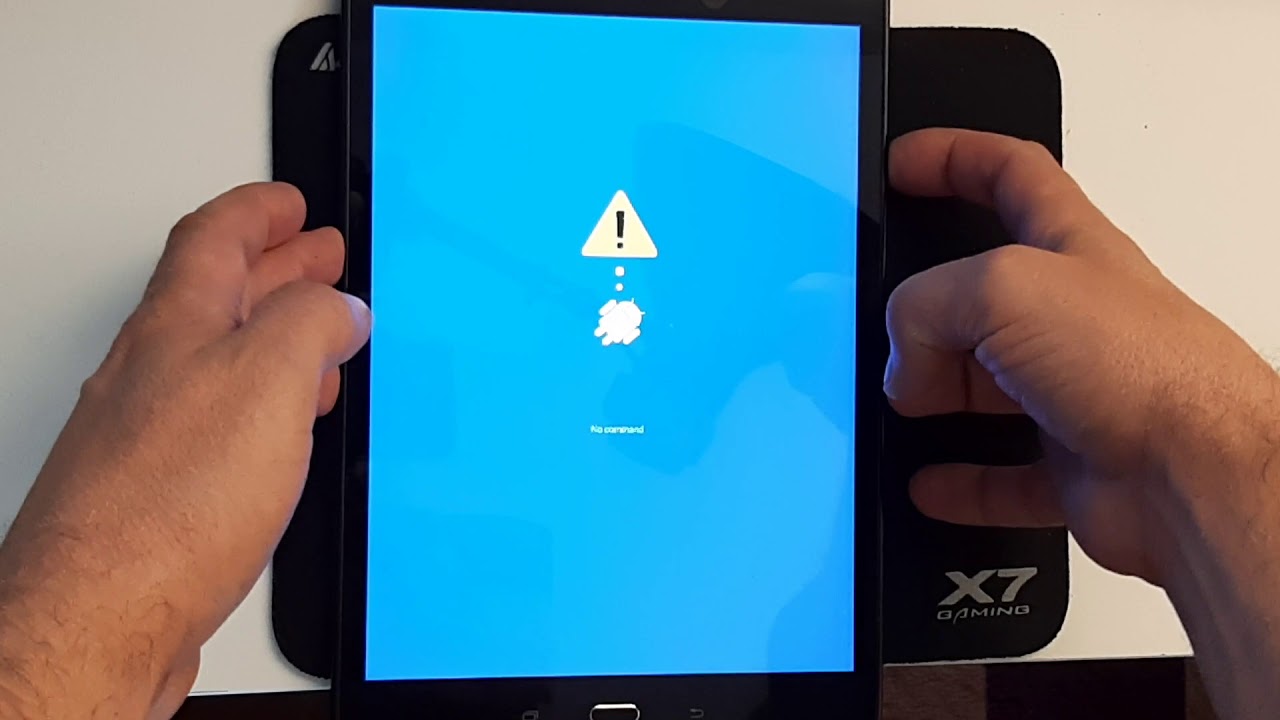Introduction
Safari, Apple's native web browser, is renowned for its sleek interface, robust security features, and seamless integration with the Apple ecosystem. However, many users have encountered a common frustration: excessive battery consumption while using Safari. This issue has sparked curiosity and concern among Apple device owners, prompting them to seek a deeper understanding of the factors contributing to Safari's battery usage.
In this article, we will delve into the intricacies of Safari's battery consumption, shedding light on the underlying reasons for its impact on device battery life. By exploring the various elements that influence Safari's power consumption, we aim to equip readers with valuable insights and practical tips to mitigate this issue effectively.
As we embark on this exploration, it's essential to recognize the significance of addressing battery usage concerns associated with Safari. By understanding the root causes and implementing effective strategies to optimize battery performance, users can enhance their overall browsing experience and prolong the battery life of their Apple devices. Join us as we unravel the mysteries behind Safari's battery usage and empower users with actionable solutions to alleviate this common challenge.
Background on Safari and Battery Usage
Safari, Apple's proprietary web browser, has long been celebrated for its exceptional performance and user-friendly interface. With a focus on privacy and security, Safari has garnered a loyal user base across various Apple devices, including iPhones, iPads, and Mac computers. However, despite its numerous advantages, Safari's impact on battery life has been a topic of concern for many users.
The seamless integration of Safari with the Apple ecosystem, coupled with its advanced features such as Intelligent Tracking Prevention and built-in privacy tools, makes it the browser of choice for numerous Apple device owners. However, the very features that contribute to its appeal may also be linked to its impact on battery usage.
Apple's commitment to user privacy and security has led to the implementation of sophisticated algorithms and processes within Safari. These mechanisms, while crucial for safeguarding user data and ensuring a secure browsing experience, may inadvertently contribute to increased battery consumption. Additionally, Safari's optimization for performance and rendering complex web content may require substantial processing power, potentially leading to heightened energy demands.
Furthermore, Safari's support for advanced web technologies, including HTML5, CSS3, and JavaScript, enables users to access dynamic and interactive web content. While this enriches the browsing experience, it may also exert a notable strain on device resources, including battery power.
The evolving nature of web content, characterized by multimedia elements, animations, and real-time updates, places additional demands on Safari's rendering capabilities. As a result, the browser may intensify its energy consumption to deliver a seamless and immersive browsing experience, albeit at the expense of battery life.
Understanding the intricate relationship between Safari's feature-rich environment and its impact on battery usage is pivotal for users seeking to optimize their device's energy efficiency. By gaining insight into the underlying mechanisms driving Safari's battery consumption, users can make informed decisions and implement effective strategies to mitigate this issue, thereby enhancing their overall browsing and device usage experience.
Factors Contributing to Safari's Battery Usage
Safari's impact on battery life can be attributed to a confluence of factors inherent to its design, functionality, and the evolving landscape of web content. Understanding these underlying elements is crucial for users seeking to address battery usage concerns effectively.
-
Advanced Web Technologies: Safari's support for cutting-edge web technologies, such as HTML5, CSS3, and JavaScript, enables users to access dynamic and interactive web content. While this enhances the browsing experience, it also exerts a notable strain on device resources, including battery power. The seamless rendering of complex web elements and the execution of resource-intensive scripts may contribute to heightened energy consumption.
-
Privacy and Security Features: Safari's robust privacy and security features, including Intelligent Tracking Prevention and built-in privacy tools, are integral to its appeal. However, the implementation of sophisticated algorithms and processes to safeguard user data and ensure a secure browsing experience may inadvertently lead to increased battery consumption. The continuous monitoring and analysis of web content for privacy and security purposes may require substantial processing power, impacting overall energy efficiency.
-
Optimization for Performance: Safari's optimization for performance, characterized by its swift page loading and smooth browsing experience, is a testament to its engineering prowess. However, this optimization may necessitate significant processing power, potentially intensifying energy demands. The browser's ability to render complex web content efficiently, while delivering a seamless user experience, may contribute to elevated battery usage.
-
Multimedia-Rich Web Content: The evolving nature of web content, marked by multimedia elements, animations, and real-time updates, places additional demands on Safari's rendering capabilities. The seamless integration of multimedia content and the execution of dynamic scripts may amplify energy consumption, as the browser strives to deliver an immersive and visually engaging browsing experience.
-
Background Processes and Extensions: Safari's support for background processes and extensions, designed to enhance functionality and user experience, may inadvertently impact battery life. Background processes, including content preloading and resource caching, as well as the execution of extensions, can contribute to sustained energy consumption, particularly during extended browsing sessions.
By recognizing these factors contributing to Safari's battery usage, users can gain a comprehensive understanding of the intricacies involved. Armed with this knowledge, users can explore effective strategies to optimize battery performance and mitigate the impact of Safari's energy consumption on their Apple devices.
Tips for Reducing Safari's Battery Usage
As users seek to optimize their device's energy efficiency and mitigate the impact of Safari's battery consumption, implementing practical strategies can significantly enhance the browsing experience. Here are actionable tips to reduce Safari's battery usage:
-
Manage Extensions: Review and manage installed extensions in Safari to identify any that may contribute to increased battery consumption. Disable or remove extensions that are not essential, particularly those running background processes or consuming excessive resources.
-
Enable Content Blockers: Leverage Safari's content blocking feature to restrict resource-intensive content, such as ads, trackers, and media elements, from loading on webpages. By reducing the volume of data and multimedia content, users can alleviate the strain on device resources and enhance battery efficiency.
-
Optimize Tab Management: Limit the number of open tabs in Safari to minimize the browser's memory and processing demands. Closing unnecessary tabs not only conserves system resources but also contributes to improved battery performance, especially during extended browsing sessions.
-
Update Safari Regularly: Ensure that Safari is updated to the latest version to benefit from performance enhancements and optimizations. Apple frequently releases updates that address battery efficiency and overall browser performance, making it essential to stay current with the latest software releases.
-
Utilize Reader Mode: When reading articles or long-form content, activate Safari's Reader mode to streamline the webpage and eliminate extraneous elements. This reduces the processing load on the browser, leading to improved battery efficiency while enhancing the readability of content.
-
Manage Website Notifications: Review and manage website notification permissions in Safari to minimize the delivery of real-time updates and notifications. Reducing the frequency of notifications can alleviate the browser's processing demands and contribute to prolonged battery life.
-
Monitor Background Processes: Keep an eye on background processes initiated by Safari, such as content preloading and resource caching. While these processes enhance browsing performance, they may impact battery consumption. Monitoring and managing these background activities can help optimize battery usage.
-
Adjust Auto-Play Settings: Configure Safari's auto-play settings to prevent videos and multimedia content from playing automatically. By controlling the playback of media elements, users can conserve battery power and minimize the impact of multimedia-rich content on energy consumption.
-
Utilize Low Power Mode: On supported devices, activate Low Power Mode to optimize battery performance while using Safari. This feature adjusts various system settings, including performance and background activity, to extend battery life during critical usage scenarios.
By implementing these tips, users can proactively address Safari's battery usage concerns and optimize their browsing experience while preserving the battery life of their Apple devices. Embracing these strategies empowers users to strike a balance between enjoying the full capabilities of Safari and maximizing energy efficiency, ultimately enhancing their overall device usage experience.
Conclusion
In conclusion, Safari's impact on battery usage is a multifaceted issue influenced by a convergence of factors, including advanced web technologies, privacy and security features, optimization for performance, multimedia-rich web content, and background processes. The intricate interplay of these elements underscores the complexity of Safari's energy consumption and its implications for device battery life.
As users navigate the digital landscape with their Apple devices, the quest for a seamless browsing experience must be harmonized with the imperative of optimizing battery performance. By gaining a deeper understanding of the underlying mechanisms driving Safari's battery usage, users can proactively address this challenge and enhance their overall device usage experience.
The actionable tips provided offer practical strategies to mitigate Safari's impact on battery life, empowering users to optimize energy efficiency without compromising the browser's functionality. From managing extensions and leveraging content blockers to optimizing tab management and utilizing reader mode, these strategies enable users to strike a balance between maximizing browsing capabilities and preserving battery life.
Furthermore, the evolving nature of web content and the continuous advancements in browser technologies underscore the dynamic nature of the battery usage landscape. As users embrace the latest updates and optimizations, they can harness the full potential of Safari while benefiting from enhanced battery efficiency.
Ultimately, the quest to reduce Safari's battery usage is a testament to the symbiotic relationship between technological innovation and user empowerment. By implementing these strategies and staying attuned to the evolving landscape of web browsing, users can navigate the digital realm with confidence, knowing that they can optimize their device's energy efficiency while enjoying the full capabilities of Safari.
In essence, Safari's impact on battery usage is a compelling narrative that underscores the intersection of technological sophistication and user-centric optimization. By embracing a proactive approach to battery performance and leveraging the insights shared in this article, users can embark on a journey of seamless browsing experiences, empowered by the harmony of technological prowess and energy efficiency.

























